
Where do you get your iron?
You may know that iron is absolutely vital for health and necessary for the production of hemoglobin, a protein that transfers oxygen from the lungs to the tissues, however what many people don't realise is that there are two kinds of iron: heme-iron and non-heme iron.
Heme-iron is not regulated by the body, which means it is always absorbed, while non-heme iron is regulated by the body and only absorbed when it is required.
Both types of iron are present in meat, but plants and fortified foods only contain non-heme iron.
Although heme-iron is generally absorbed better, a high absorption rate is not necessarily a good thing as the body actually has no mechanism for disposing of excess iron. It just builds up. However non-heme iron (the kind you get from plants) is more beneficial to the human body because its absorption remains safely regulated so the body can naturally regulate the amounts of iron being absorbed based on the current levels in your body.
Iron from animal sources (heme-iron) can accumulate to harmful levels, and a surplus of iron can actually be more damaging than a deficiency, but only those people who eat meat or take iron supplements are in danger of a surplus. An accumulation of too much heme-iron in the body can lead to permanent damage of the brain and liver. There are also many studies linking consumption of heme-iron over a lifetime to chronic heart-disease and Alzheimer's disease.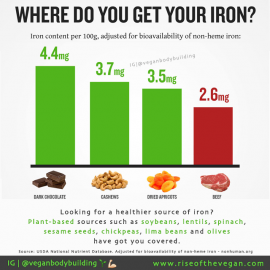
The link between red meat consumption and heart disease has been bolstered by a finding that makes a strong association between heme-iron, found only in meat, and potentially deadly coronary heart disease. The study found that heme-iron consumption increased the risk for coronary heart disease by 57 percent, while no association was found between non-heme iron and coronary heart disease.
So how much iron do I need?
| Age | Male | Female |
|---|---|---|
| Birth to 6 months | 0.27mg | 0.27mg |
| 7-12 months | 11mg | 11mg |
| 1-3 years | 7mg | 7mg |
| 4-8 years | 10mg | 10mg |
| 9-13 years | 8mg | 8mg |
| 14-18 years | 11mg | 15mg |
| 19-50 years | 8mg | 18mg |
| 51+ years | 8mg | 8mg |
Women naturally have a higher requirement for iron as some is lost through menstruation, and pregnant women have an even greater need for iron, requiring around 27mg/day.
Is it difficult for Vegans to obtain enough iron?
No, and there's also no research showing that vegetarian or largely plant-based diets lead to significant increases in the risk of iron-deficiency anaemias. In fact, at least one research group found that the intake of iron across the US population was higher in people that did not include meat in their diet.
It may come as a surprise, but researchers have found that people eating plant-based diets eat as much or more iron as people who regularly rely on animal foods. There is an abundance of plant-based iron sources, as you can see here:
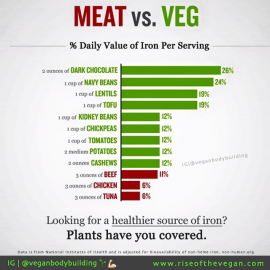
A common misconception is that plant foods are not rich sources of iron. In fact, many plant foods contain more than 10% of your daily iron requirement per serving. For example, a serving of lentils or spinach contain as much as one third of the daily requirement.
Research suggests that 90% of the iron in the average Western diet may actually be from non-heme iron anyway; the other 10% comes mainly coming from the haemoglobin of meat.
Am I getting enough iron?
Signs of deficiency include general fatigue, weakness, pale skin, shortness of breath and dizziness, but the only way to know for sure is to ask your doctor for a blood test to check serum ferritin levels.
If you're concerned you're not getting enough iron in your diet, make sure you're also getting plenty of Vitamin C (ascorbic acid) in the same meal which can make the iron in your diet easier to absorb.
Vitamin C is found in abundance in fruit and vegetables and can increase the amount of iron absorbed considerably. It does this in two ways: binding to the iron to make it easier to absorb and also preventing it from binding to phytates or tannins.
Consuming eight strawberries or 200ml of orange juice (which contains about 75mg of vitamin C) can increase iron absorption by 3 to 4 times as much.
Vitamin C has even been shown to be more effective at increasing iron status than iron supplementation!
Interestingly, cooking can increase the amount of iron available. One study showed that 37 out of 48 different vegetables provided more iron after being cooked. The available iron in broccoli increased 5x and in cabbage, 3x.
However calcium supplements can inhibit iron absorption, so if you are using calcium supplements, consume iron-rich foods at different times to ensure adequate iron absorption.
So, in summary, a whole-foods, plant-based diet can safely meet the body's iron requirements without any of the dangers of excess iron. Phew! Another thing vegans don't have to worry about! If you found this article useful, please share it with your friends so we can help change the common misconceptions people have about iron and plant-based diets.
References
http://www.ncbi.nlm.nih.gov/pubmed/7373033; http://www.ncbi.nlm.nih.gov/pubmed/16785051; http://www.ncbi.nlm.nih.gov/pubmed/7971780; http://pubs.acs.org/doi/abs/10.1021/bk-2002-0816.ch010; http://ajcn.nutrition.org/content/51/4/649.abstract; http://www.ncbi.nlm.nih.gov/pubmed/8582755; http://www.ncbi.nlm.nih.gov/pubmed/15831123; http://www.ncbi.nlm.nih.gov/pubmed/8172127 http://www.ncbi.nlm.nih.gov/pubmed/8582755
Subscribe!
Love this content?
Receive our awesome newsletter straight to your Inbox!
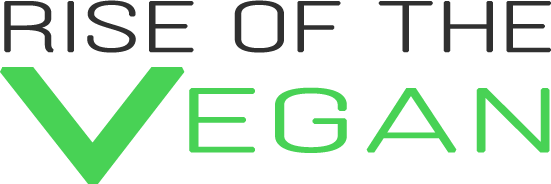
 Your email address will always stay private.
Your email address will always stay private.
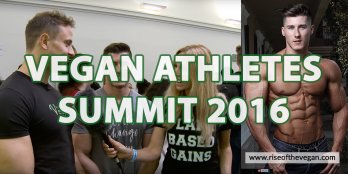

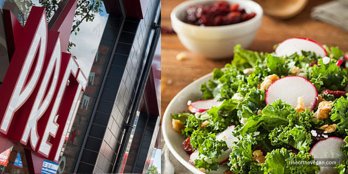
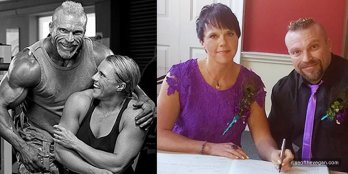

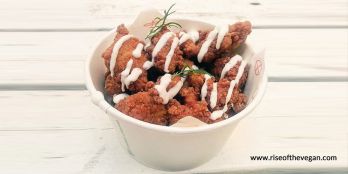


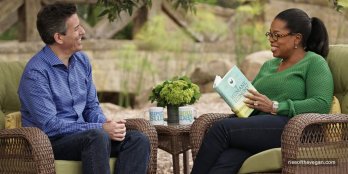

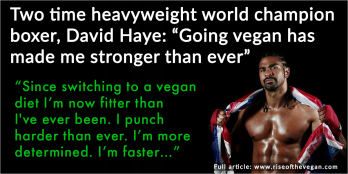


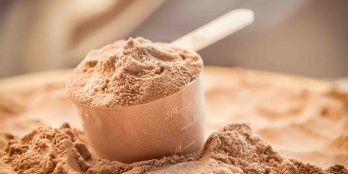
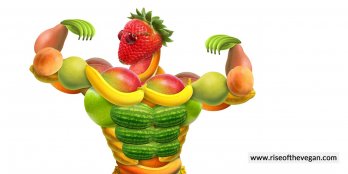
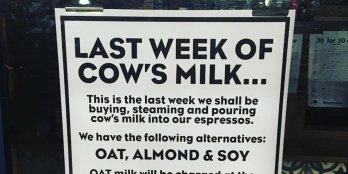
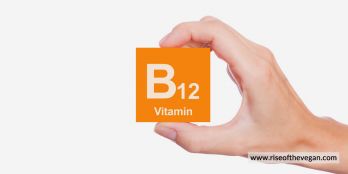
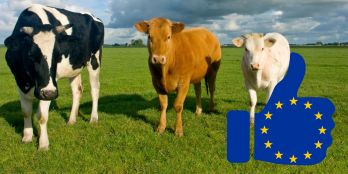

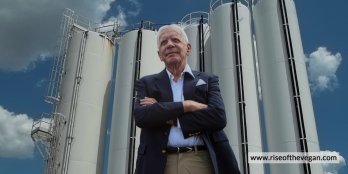






Comments
Amazing work!!!!!!!!!!! I mean it! 🎉🎉🎉🎉
thanks for the info!
Nicely summed up there!!